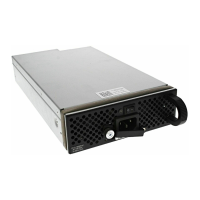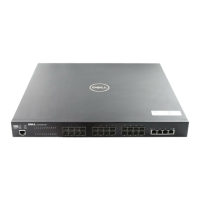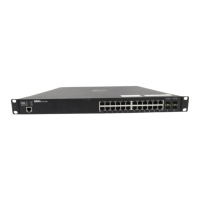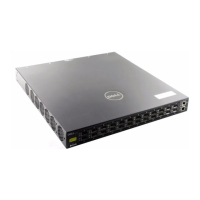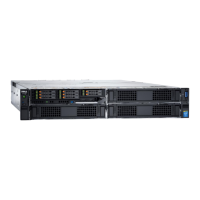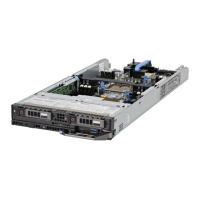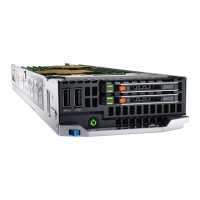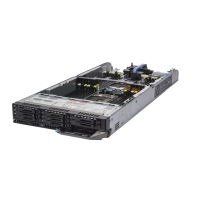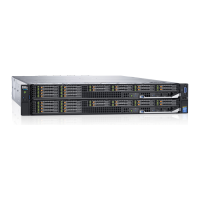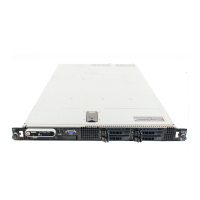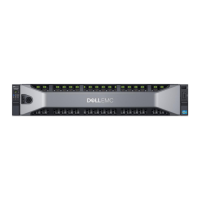Open Shortest Path First (OSPFv2) | 371
Loopback interfaces also assist in the OSPF process. OSPF picks the highest interface address as the
router-id and a loopback interface address has a higher precedence than other interface addresses.
Figure 20-11 shows the
show ip ospf process-id interface command with a loopback interface.
Figure 20-11. show ip ospf process-id interface Command Example
Configure Stub Areas
OSPF supports different types of LSAs to help reduce the amount of router processing within the areas.
Type 5 LSAs are not flooded into stub areas; the ABR advertises a default route into the stub area to which
it is attached. Stub area routers use the default route to reach external destinations
To ensure connectivity in your OSPFv2 network, never configure the backbone area as a stub area.
To configure a stub area, follow these steps, starting in EXEC Privilege mode.
Step Command Syntax Command Mode Usage
1
show ip ospf process-id
database database-summary
EXEC Privilege Review all areas after they were configured to
determine which areas are NOT receiving type 5
LSAs.
2
configure
EXEC Privilege Enter CONFIGURATION mode.
3
router ospf process-id CONFIGURATION Enter ROUTER OSPF mode.
Process ID is the ID assigned when configuring
OSPFv2 globally.
4
area area-id stub [no-summary] CONFIG-ROUTER-O
SPF-id
Configure the area as a stub area. To prevent
transmission to the area of summary ASBR LSAs.,
use the keywords no-summary.
Area ID is the number or IP address assigned when
creating the Area.
FTOS#show ip ospf 1 int
TenGigabitEthernet 13/23 is up, line protocol is up
Internet Address 10.168.0.1/24, Area 0.0.0.1
Process ID 1, Router ID 10.168.253.2, Network Type BROADCAST, Cost: 1
Transmit Delay is 1 sec, State DROTHER, Priority 1
Designated Router (ID) 10.168.253.5, Interface address 10.168.0.4
Backup Designated Router (ID) 192.168.253.3, Interface address 10.168.0.2
Timer intervals configured, Hello 10, Dead 40, Wait 40, Retransmit 5
Hello due in 00:00:08
Neighbor Count is 3, Adjacent neighbor count is 2
Adjacent with neighbor 10.168.253.5 (Designated Router)
Adjacent with neighbor 10.168.253.3 (Backup Designated Router)
Loopback 0 is up, line protocol is up
Internet Address 10.168.253.2/32, Area 0.0.0.1
Process ID 1, Router ID 10.168.253.2, Network Type LOOPBACK, Cost: 1
Loopback interface is treated as a stub Host.
FTOS#
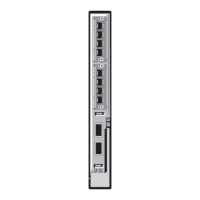
